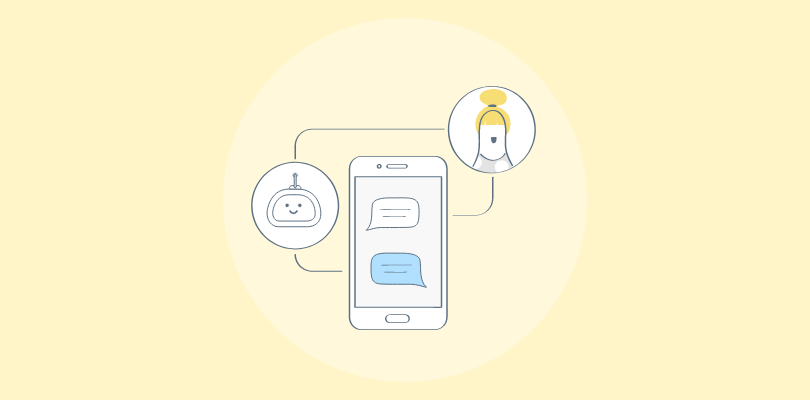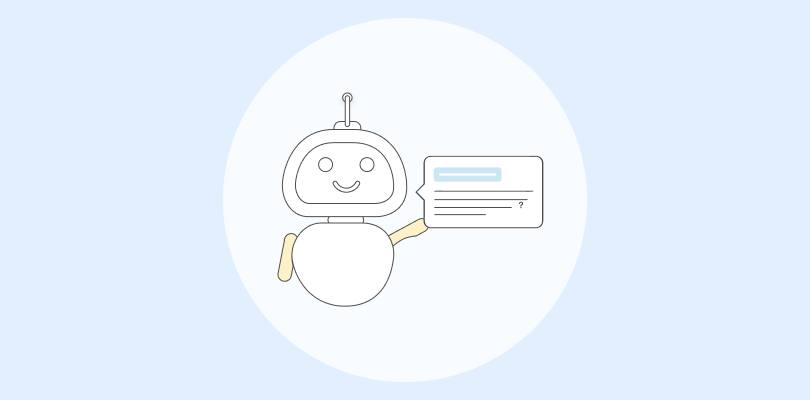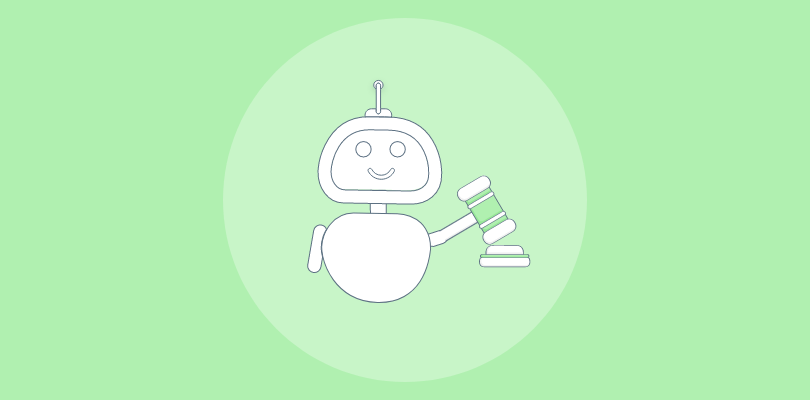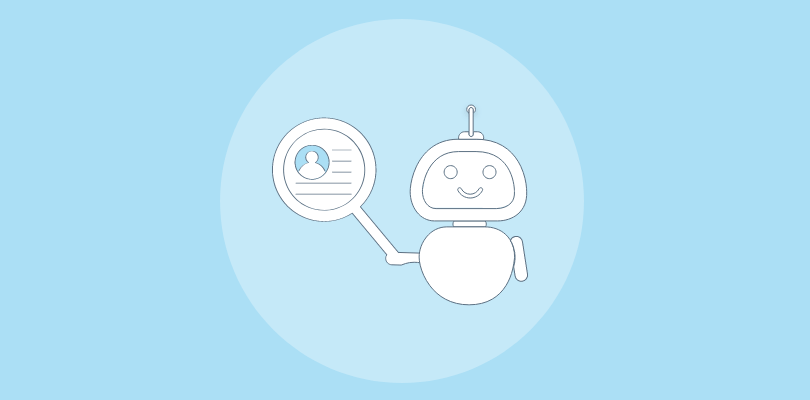Chatbots are becoming increasingly common in our daily lives, but how much do you really know about these virtual assistants?
If terms like “machine learning” and “conversational AI” leave you scratching your head, you’re not alone!
Whether you’re a newbie or experienced in the chatbot world, these chatbot terminologies are crucial for a smoother implementation and a better understanding of how chatbots work.
This guide simplifies 21 key chatbot terms, making the complex world of automated conversations accessible to everyone. So, let’s get started!
The Ultimate List of 21 Essential Chatbot Terminologies
Here’s a quick AI chatbot glossary to help you understand the key terms you’ll come across when exploring chatbots. It’s designed to simplify the jargon and make your chatbot journey easier.
A. Core Concepts
1. AI and Machine Learning (ML)
AI and Machine Learning (ML) are technologies that help chatbots understand and respond to users more effectively. AI allows chatbots to process and interpret human language, while ML helps them learn from interactions and improve over time.
For example, if a chatbot keeps receiving questions about store hours, it might learn to automatically provide this information without needing a prompt.
In simple terms, AI helps the chatbot “think,” and ML helps it “get smarter” with experience, making chatbot conversations more natural and helpful as they continue to interact with users.
2. Natural Language Processing (NLP)
Natural Language Processing (NLP) is a technology that helps chatbots understand and respond to human language in a way that feels natural. It allows chatbots to read, interpret, and respond to what you type, just like a human would.
For example, if you ask a chatbot, “What are your store hours?” it uses NLP to understand your question and provide an accurate response.
In short, NLP helps chatbots communicate effectively and understand what you mean, even when you phrase things differently. It’s a crucial part of making chatbots smarter and more user-friendly.
3. Intent recognition
Intent recognition is when a chatbot understands the purpose behind a user’s message. It’s like when you ask a chatbot, “What time does the store close?” The chatbot recognizes that you’re asking for the store’s closing time, not just chatting.
By figuring out the “intent” of the question, the chatbot can provide the correct answer. This term is important because it helps chatbots have more meaningful conversations with users, ensuring they understand and respond appropriately.
Without good intent recognition, a chatbot might not give the helpful answers you’re expecting, making it less useful.
4. Entity Extraction
Entity extraction is a process where a chatbot identifies and pulls out specific pieces of information from a user’s message to understand their intent better.
For example, if a user says, “I need a flight to New York on Friday,” the chatbot recognizes “New York” as the destination and “Friday” as the date. This helps the bot provide accurate and relevant responses.
By focusing on important details like names, dates, locations, or numbers, entity extraction ensures smoother conversations. Knowing this term helps you understand how chatbots break down messages to offer more personalized and useful assistance.
B. Chatbot Types
5. Rule-Based Chatbots
Rule-based chatbots work by following a set of predefined rules to respond to user queries. These rules are created in advance and guide the chatbot’s responses based on specific keywords or phrases.

Think of it as a chatbot that answers questions like a flowchart. For example, if you ask, “What’s the price?” the chatbot follows its rule to provide a price-related answer. While they’re great for straightforward queries, they might not handle complex conversations well.
6. AI-Powered Chatbots
AI-powered chatbots use artificial intelligence to understand and respond to user queries in a human-like way. They can analyze text, learn from conversations, and offer relevant answers.
These chatbots are trained with large amounts of data, helping them improve their responses over time. They’re widely used for customer service, sales, and support, handling everything from simple questions to complex tasks.
Unlike traditional bots, AI-powered ones can understand context, making conversations more natural and effective. With their ability to work 24/7, they’re a valuable tool for businesses looking to enhance customer experience and engagement.
7. Hybrid Chatbots
Hybrid chatbots combine the best of both worlds—AI automation and human support. They handle common questions using automated responses but seamlessly transfer complex issues to a human agent.
This makes them ideal for businesses that want efficiency without losing the personal touch.
For example, a hybrid chatbot can help with simple booking queries and then pass more detailed requests to a live representative.
8. Voice Chatbots
Voice chatbots are virtual assistants that let you interact using your voice instead of typing. Think of tools like Alexa or Google Assistant—they respond to what you say, making it easy to ask questions or give commands.
These chatbots use speech recognition to understand your words and respond appropriately. They’re commonly used in smart devices, customer support, and even healthcare.
If you’re learning about chatbot terms, understanding voice chatbots is essential because they show how chatbots can work beyond text, making communication even more natural and convenient.
9. Text-Based Chatbots
Text-based chatbots are simple bots that communicate with users through text. They respond to written messages, like a conversation you might have with someone over text.
These bots can answer questions, provide information, and help with tasks like booking appointments or placing orders.
Text-based chatbots are easy to use, as they only require typing and reading. They don’t rely on voice or images, making them a great option for quick and clear communication.
C. Technical Chatbot Terms
10. APIs (Application Programming Interfaces)
APIs, or Application Programming Interfaces, are tools that allow different software systems to talk to each other. In the context of chatbots, APIs help chatbots interact with other platforms, like databases or websites, to fetch information or perform tasks.
For example, a chatbot can use an API to check the weather or process a payment. By connecting to external systems, APIs make chatbots smarter and more useful, allowing them to handle complex tasks and provide better user experiences.
11. Webhooks
Webhooks are a way for chatbots to send real-time information to other services or systems. Imagine you’re using a chatbot to book an appointment.
When you confirm, the chatbot can use a webhook to instantly send that information to a calendar app. It’s like a messenger that automatically delivers updates between different software.
For chatbots, webhooks help integrate with other tools, making the whole process smoother and more efficient.
12. Chatbot Frameworks
Chatbot frameworks are like the foundation or structure for building chatbots. They provide tools and features that help developers create, design, and manage chatbots more easily.
Think of it as a toolkit with ready-made components that save time and effort. These frameworks often include pre-built templates, coding libraries, and other features to simplify the creation process.
Knowing about chatbot frameworks is important because they play a big role in how chatbots work and how easily they can be set up and customized.
13. Conversational Design
Conversational design is the process of planning how a chatbot communicates with users. It’s about deciding what the chatbot will say, how it will respond, and how it guides users through different conversations. The goal is to make the chatbot feel natural and helpful, ensuring users have a smooth experience.
Good conversational design involves thinking about user questions, possible responses, and making sure the chatbot can handle them easily.
D. Performance Metrics
14. Chatbot Accuracy
Chatbot accuracy refers to how well a chatbot understands and responds to user input. When a chatbot is accurate, it can correctly interpret questions or requests and provide the right answers.
It involves the chatbot recognizing keywords, context, and user intent to give relevant responses. The better the accuracy, the more effective the chatbot is in helping users without confusion or mistakes.
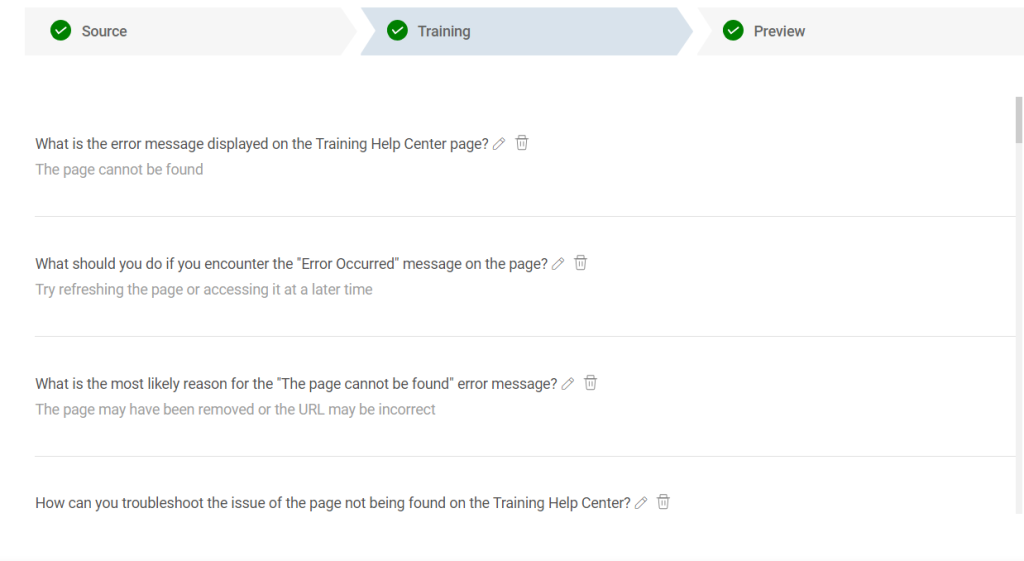
Improving chatbot accuracy involves training the system with more data, feedback, and testing to ensure it delivers the best results. This is important for creating a smooth and helpful user experience.
15. Fall Back Rate
Fall back rate refers to the percentage of times a chatbot is unable to understand or respond to a user’s query and has to send the conversation to a human agent for assistance.
A high fall back rate suggests that the chatbot might not be able to handle many queries, which can lead to customer frustration.
On the other hand, a low fall back rate means the chatbot is effectively managing most of the conversations on its own, providing a smoother experience for users.
Reducing this rate is important for improving chatbot performance and customer satisfaction.
16. User Retention Rate
User retention rate refers to the percentage of users who continue using a service or product over time. In the context of chatbots, it tracks how well a chatbot keeps users engaged and coming back for more interactions.
A high customer retention rate means that users find the chatbot helpful, reliable, and useful, leading them to return. On the other hand, a low retention rate suggests that users may not find enough value in the chatbot to keep using it.
Monitoring retention helps businesses improve their chatbot and make adjustments to better serve their audience.
17. Conversion Rate
Conversion rate refers to the percentage of people who complete a desired action after interacting with a chatbot. For example, if a chatbot helps 100 visitors, and 5 of them make a purchase or register for an event, the conversion rate is 5%.
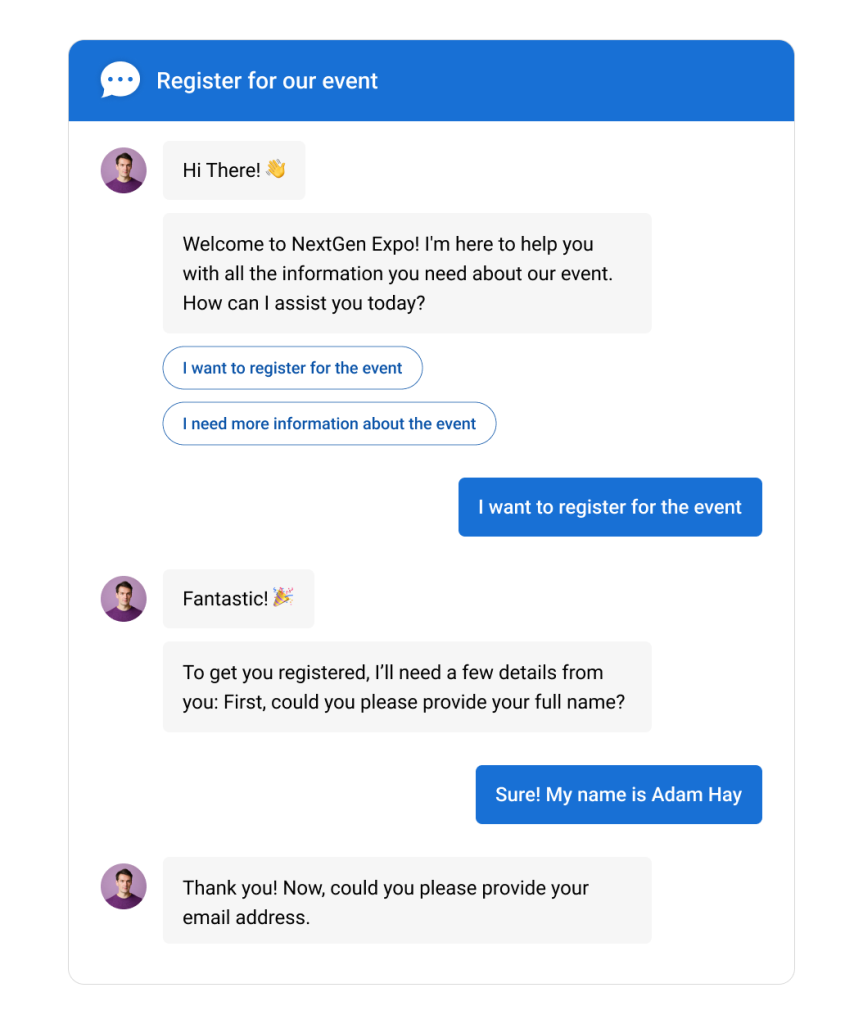
It’s a way to measure how effective a chatbot is in encouraging users to take the next step, whether it’s buying a product, subscribing to a newsletter, or filling out a form.
A higher conversion rate means the chatbot is doing a good job of guiding users toward their goals.
E. Emerging Terminologies in 2025
18. Large Language Models (LLMs)
Large Language Models (LLMs) are advanced computer programs that understand and generate human-like text. They are trained using massive amounts of text from books, websites, and other sources to learn how words and sentences work together.
In the context of chatbots, LLMs help the bot understand user questions and respond in a natural, conversational way.
They can handle complex conversations and provide relevant, accurate answers by predicting what comes next in a sentence or conversation.
19. Conversational AI Analytics
Conversational AI chatbot analytics helps you understand how well your chatbot is performing. It tracks the total number of chats, valid and invalid ones. It also checks how engaged users are with the chatbot.
This data provides valuable insights into chatbot performance, allowing businesses to assess how effectively the bot is interacting with users.
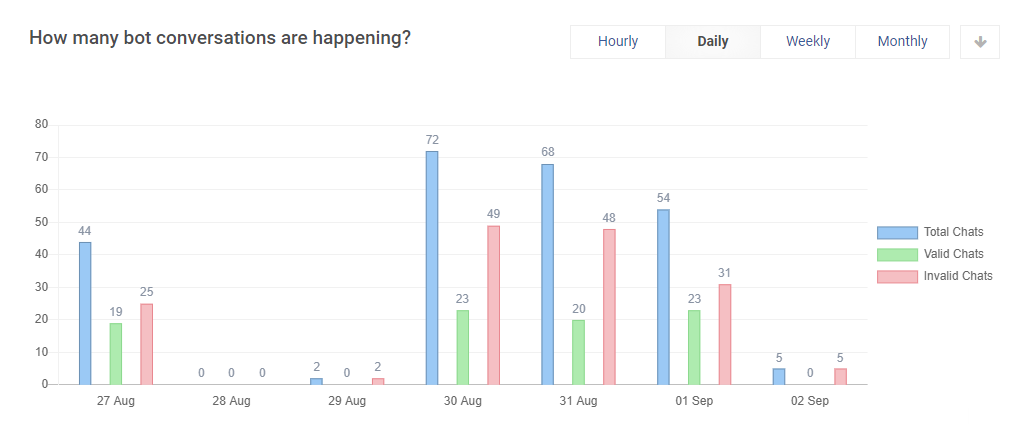
By analyzing these metrics, improvements can be made to enhance customer experience and ensure the chatbot is meeting users’ needs.
20. Synthetic Data for Chatbot Training
Synthetic data refers to artificially created data that mimics real-world data. For chatbot training, this means generating conversations or scenarios that help teach the chatbot how to respond to different questions or situations.
Instead of using actual customer data, synthetic data allows for chatbot testing and improving the chatbot’s performance without privacy concerns. It’s useful for creating diverse training examples, especially when real data isn’t available or isn’t enough.
This helps chatbots become more accurate and better at understanding and responding to user inputs, ultimately improving their overall performance.
21. AI-Powered Personalization
AI-powered personalization refers to how chatbots use artificial intelligence to tailor their responses based on individual user needs. Instead of providing the same answer to everyone, the chatbot adapts not just its replies but also its chatbot persona—the tone, style, and approach it uses—based on past interactions.
For example, if a user asks about a product, the chatbot may recommend similar items based on previous conversations or preferences.
This makes the chatbot experience more relevant and helpful to each person, improving customer satisfaction.
Master Chatbot Jargon: Start Building Smarter Bots Today!
Chatbots are becoming an essential tool for businesses, and knowing the terminology behind them is key to leveraging their full potential. From understanding key chatbot concepts to exploring advanced features, these terms are fundamental for anyone using or developing chatbot solutions.
As AI and chatbot technology continue to evolve, it’s essential to stay updated with key terms related to chatbots to upgrade your skills and stay competitive in the field.
If you’re looking for a simple and jargon-free tool to implement chatbots, ProProfs Chat offers an easy-to-use platform with customizable features and powerful integrations. You can build your bots from scratch, use ready-made templates, or train them using your existing data. Check it out today and take your customer interactions to the next level!
FREE. All Features. FOREVER!
Try our Forever FREE account with all premium features!

